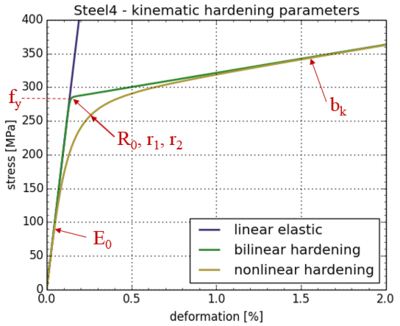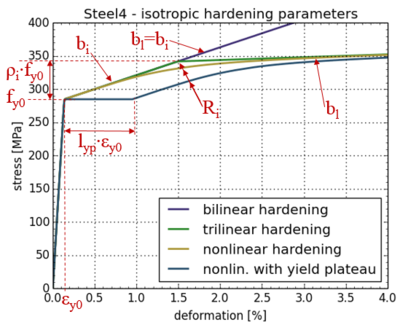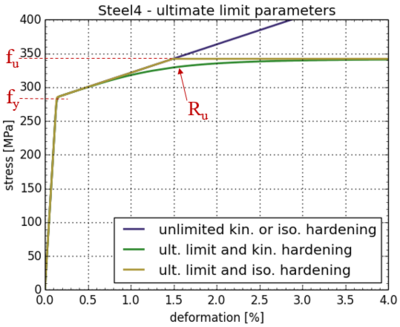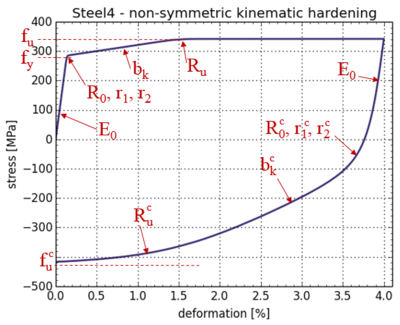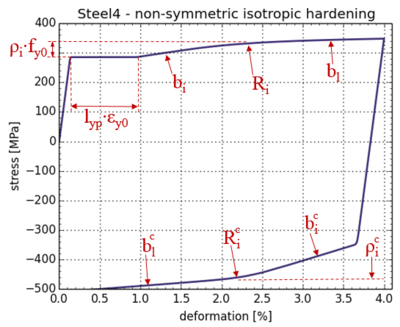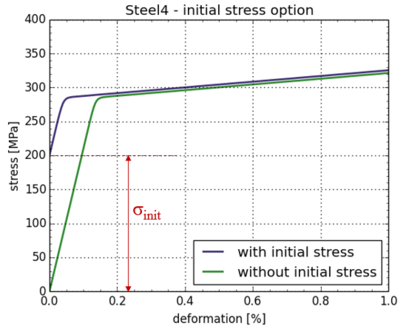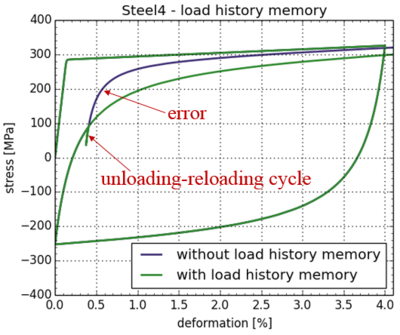Steel4 Material
- Command_Manual
- Tcl Commands
- Modeling_Commands
- model
- uniaxialMaterial
- ndMaterial
- frictionModel
- section
- geometricTransf
- element
- node
- sp commands
- mp commands
- timeSeries
- pattern
- mass
- block commands
- region
- rayleigh
- Analysis Commands
- Output Commands
- Misc Commands
- DataBase Commands
| This command is used to construct a general uniaxial material with combined kinematic and isotropic hardening and optional non-symmetric behavior. |
| uniaxialMaterial Steel4 $matTag $f_y $E_0 < -asym > < -kin $b_k $R_0 $r_1 $r_2 < $b_kc $R_0c $r_1c $r_2c > > < -iso $b_i $rho_i $b_l $R_i $l_yp < $b_ic $rho_ic $b_lc $R_ic> > < -ult $f_u $R_u < $f_uc $R_uc > > < -init $sig_init > < -mem $cycNum > |
Parameters
| $matTag | unique material object integer tag |
| $f_y | yield strength (assumed identical in tension and compression) |
| $E_0 | initial stiffness (Young's modulus) |
| optional features: |
| -kin | apply kinematic hardening |
| -iso | apply isotropic hardening |
| -ult | apply an ultimate strength limit |
| -asym | assume non-symmetric behavior |
| -init | apply initial stress |
| -mem | configure the load history memory |
Examples
Coming soon...
| Author: | Adam Zsarnóczay: zsarnoczay@vbt.bme.hu |
